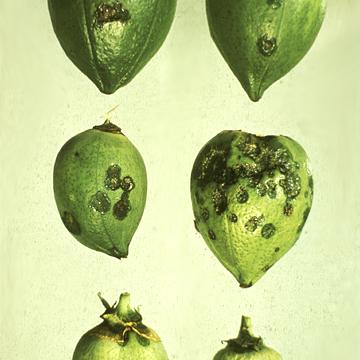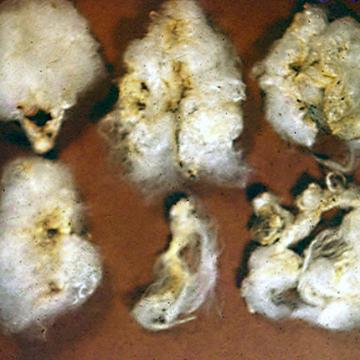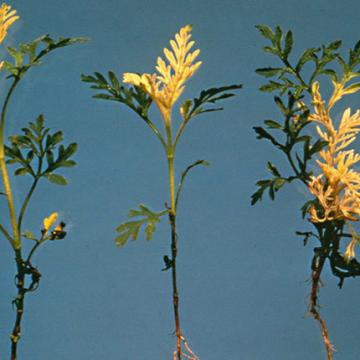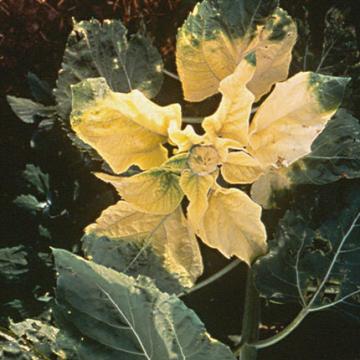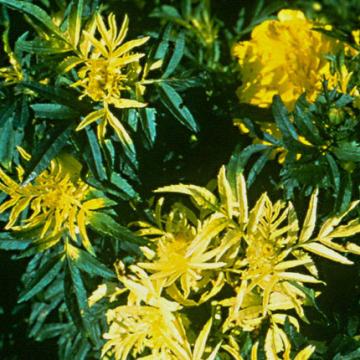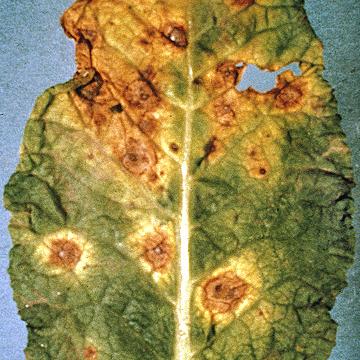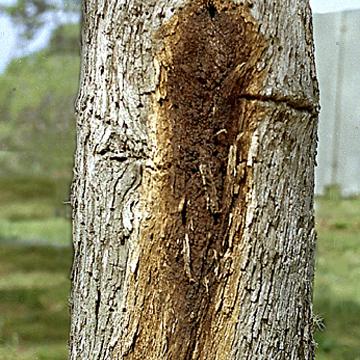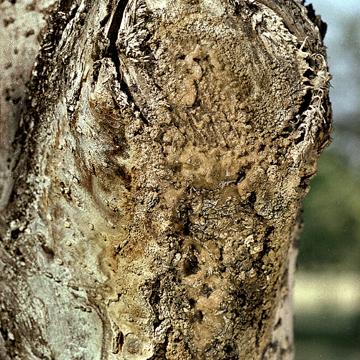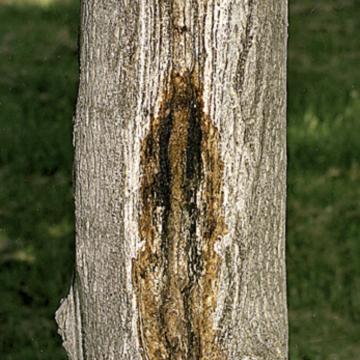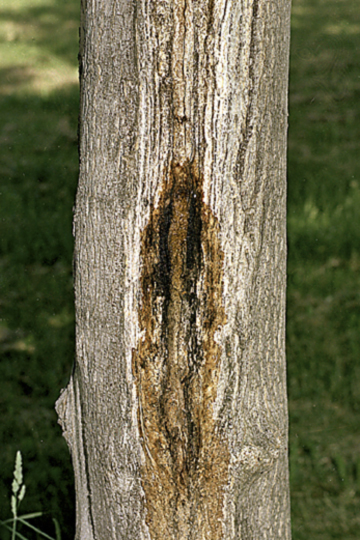DISEASE: Bacterial blight (Boll rot)
HOST: Cotton
Boll rot first appears as raised, water-soaked lesions, which become sunken and turn brown to black with time.
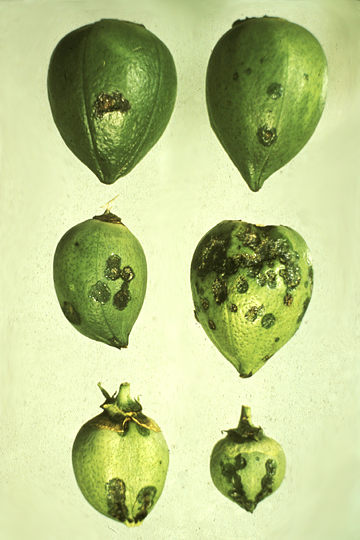
Bacterial blight (Boll rot) | Cotton
DISEASE: Bacterial blight (Boll rot)
HOST: Cotton (Gossypium barbadense)
PATHOGEN: Xanthomonas citri subsp. malvacearum
PATHOGEN SYNONYM: Xanthomonas campestris pv. malvacearum
SOURCE: A. Hayward
DISEASE: Bacterial blight (Boll rot)
HOST: Cotton
Infection of bolls causes premature opening and increased susceptibility to secondary, saprophytic microorganisms that cause rot. Note discolored cotton.
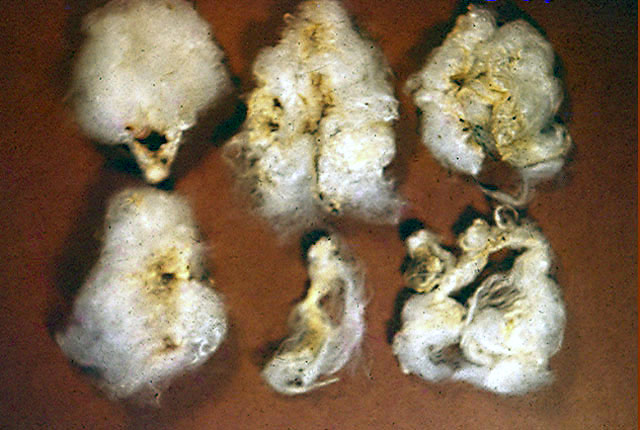
Bacterial blight (Boll rot) | Cotton
DISEASE: Bacterial blight (Boll rot)
HOST: Cotton (Gossypium barbadense)
PATHOGEN: Xanthomonas citri subsp. malvacearum
PATHOGEN SYNONYM: Xanthomonas campestris pv. malvacearum
SOURCE: APS
DISEASE: Pseudomonas leaf spot
HOST: Marigold
Marigolds with yellow apical chlorosis attributed to toxin production by the pathogen.
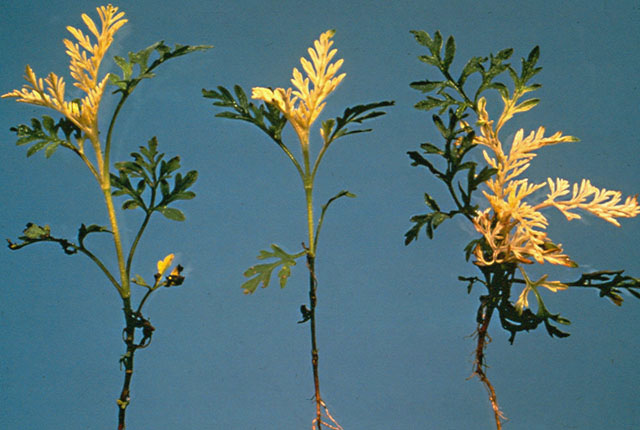
Pseudomonas leaf spot | Marigold
DISEASE: Pseudomonas leaf spot
HOST: Marigold (Tagetes erecta)
PATHOGEN: Pseudomonas syringae pv. tagetis
SOURCE: R. Durbin
DISEASE: Pseudomonas leaf spot
HOST: Marigold
Chlorotic leaves with total loss of chlorophyll. Disease is also known as toxic chlorosis.
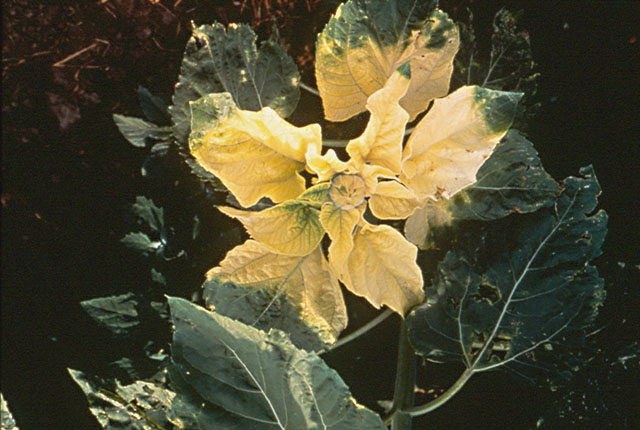
Pseudomonas leaf spot | Marigold
DISEASE: Pseudomonas leaf spot
HOST: Marigold (Tagetes erecta)
PATHOGEN: Pseudomonas syringae pv. tagetis
SOURCE: R. Durbin
DISEASE: Pseudomonas leaf spot
HOST: Marigold
Plants with bright yellow apical chlorosis.
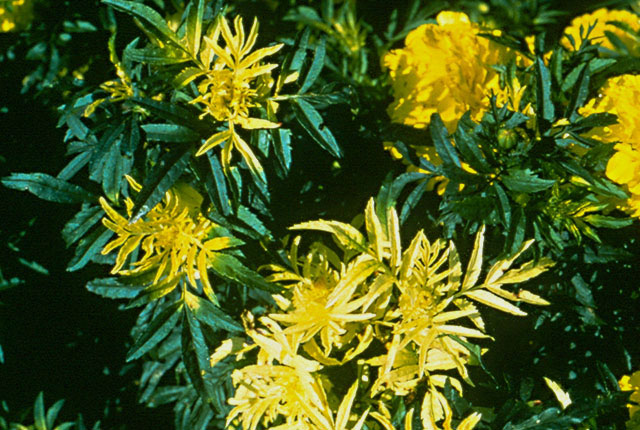
Pseudomonas leaf spot | Marigold
DISEASE: Pseudomonas leaf spot
HOST: Marigold (Tagetes patula)
PATHOGEN: Pseudomonas syringae pv. tagetis
SOURCE: R. Durbin
DISEASE: Pseudomonas leaf spot
HOST: Primrose
Leaf with brownish red spots and reddening of adjacent areas. Disease begins as small, water-soaked lesions that later coalesce into large necrotic spots.
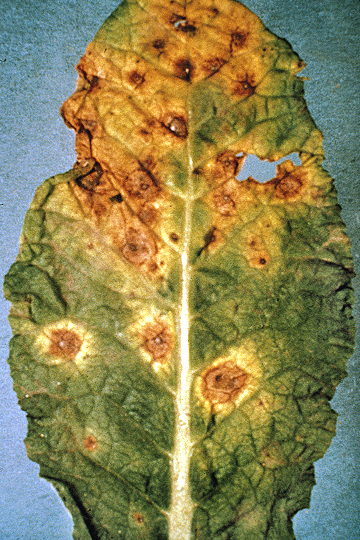
Pseudomonas leaf spot | Primrose
DISEASE: Pseudomonas leaf spot
HOST: Primrose (Primula sp.)
PATHOGEN: Pseudomonas syringae pv. primulae
SOURCE: APS
DISEASE: Slime flux
HOST: Casuarina
Slime flux occurs on a number of tree species and is always associated with bacteria and yeast. However, the causal agent has not been identified.
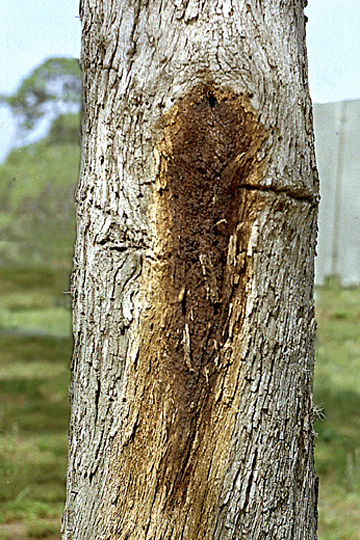
Slime flux | Casuarina
DISEASE: Slime flux
HOST: Casuarina (Casuarina equisetifolia)
PATHOGEN: Causal agent unknown
SOURCE: W. Sinclair
DISEASE: Slime flux
HOST: Elm
Although bacteria are associated with slime fluxes of many trees, the causal agents have not been identified.
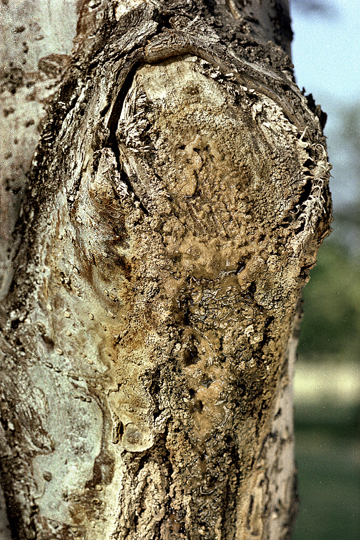
Slime flux | Elm
DISEASE: Slime flux
HOST: Elm (Ulmus pumila)
PATHOGEN: Causal agent unknown
SOURCE: W. Sinclair


